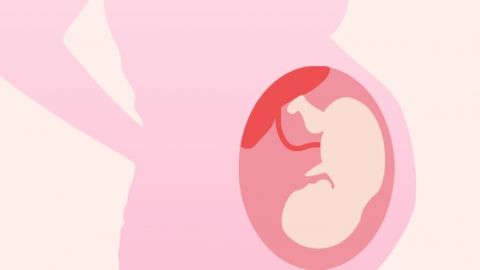What causes a smaller than normal head circumference in four-dimensional ultrasound?
Generally, a smaller than average four-dimensional head circumference may be caused by hereditary factors, physiological changes, malnutrition, intrauterine growth restriction, or primary microcephaly. Symptomatic management involving general treatment, medication, or surgical treatment may be necessary. If abnormal symptoms occur, prompt medical consultation is advised. Detailed explanations are as follows:

1. Genetic Factors
A baby's head circumference may be influenced by genetic factors. If either parent or other family members have smaller head circumferences, the newborn may also exhibit a smaller head circumference. Usually, no specific treatment is required, and physicians will monitor the infant's growth and development regularly to ensure overall good health.
2. Physiological Changes
When a four-dimensional color ultrasound reveals a fetal head circumference smaller than expected by 1-2 weeks without other malformations, this typically represents normal physiological variation, possibly due to individual developmental differences or measurement errors. Generally, no additional symptoms are present, and pregnant women should maintain a balanced diet during pregnancy and undergo regular follow-up examinations.
3. Malnutrition
Poor maternal nutrition during pregnancy may affect fetal bone and soft tissue development, leading to a smaller head circumference. This condition may be accompanied by slow maternal weight gain and abnormal fetal growth indicators. Pregnant women should consume adequate protein-rich foods such as eggs and milk to improve fetal nutrition.
4. Intrauterine Growth Restriction
Intrauterine growth restriction refers to a fetal weight below the 10th percentile for gestational age, which can restrict head development and result in a smaller head circumference. It may also be accompanied by slow growth in maternal uterine height and abdominal circumference, as well as reduced fetal growth indicators such as biparietal diameter and femur length. It is recommended to follow medical advice and use medications such as leuprolide injection, triptorelin injection, or betamethasone injection to improve the condition.
5. Primary Microcephaly
Primary microcephaly is a developmental disorder of the cerebellar tissue caused by premature closure of the frontal sutures during embryonic development, resulting in a narrow cranial cavity, increased intracranial pressure, and subsequent cerebral cortical compression, leading to intellectual disability and motor impairments. Patients with microcephaly can be treated surgically, such as through decompressive craniectomy or ventriculoperitoneal shunting, to alleviate intracranial pressure and promote brain tissue development.
Pregnant women are advised to undergo regular prenatal checkups to monitor their own health and fetal development, promptly identify and address any issues, and ensure healthy fetal growth.
References
[1] Huang Xiaoyun, Zhu Yuanfang, Liu Huilong, et al. Evaluation Report on Intrauterine Growth of Primiparous and Multiparous Neonates and Development of Curves for Weight, Length, Crown-Rump Length, Head Circumference, and Chest Circumference. Chinese Journal of Reproductive Health, 2024, 35(02): 152-161.
[2] Li Yang, Wang Rui, Liu Ling, et al. Analysis of the Impact of Isolated Maternal Hypothyroxinemia on Fetal Head Circumference Development During Pregnancy. Chinese Journal of Women and Children's Health Research, 2024, 35(06): 7-11.




